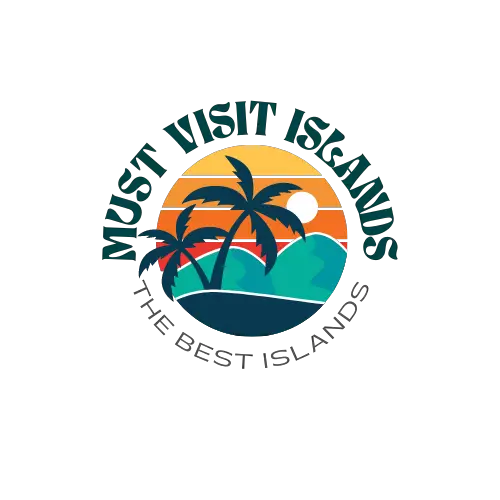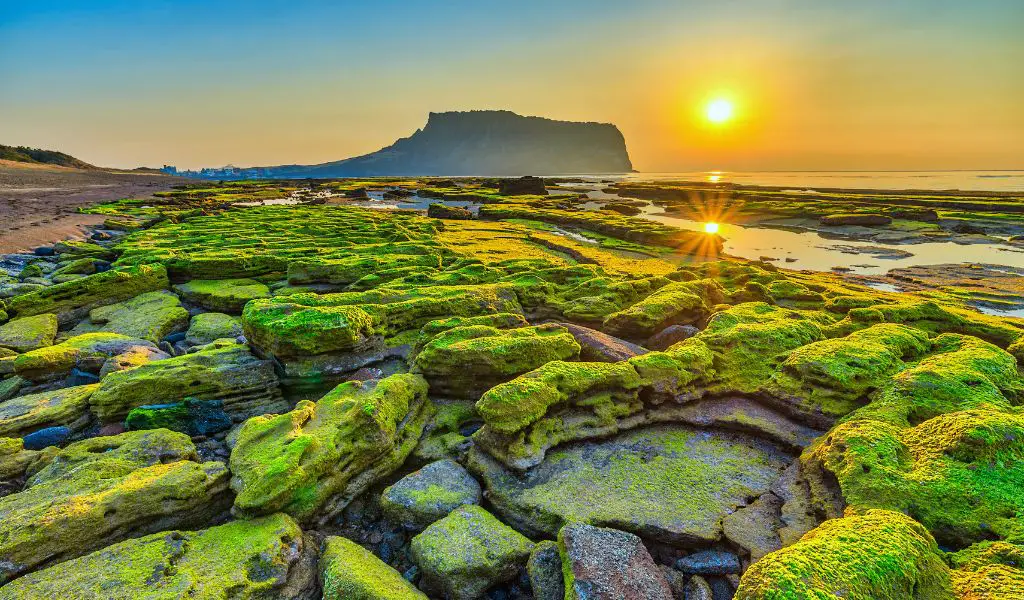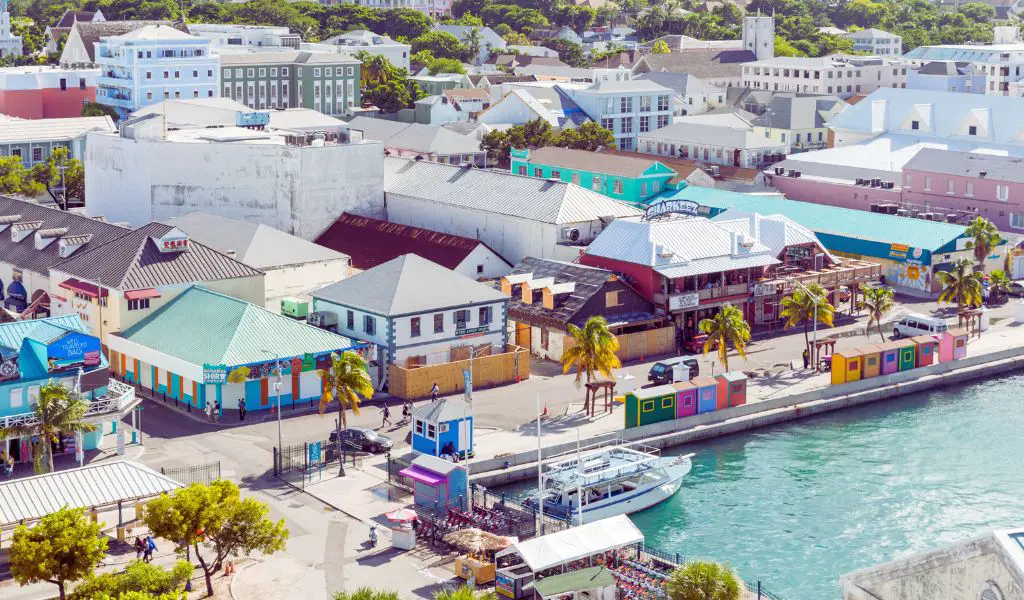Jeju Island, locally known as Jeju-do, is South Korea’s largest island, renowned for its volcanic landscapes, lush greenery, and pristine beaches. Nestled in the Korea Strait, this island is a natural paradise formed from volcanic eruptions over two million years ago.
Geography
The island’s impressive geology has earned it a triple crown in UNESCO designations – a first in the world.
It’s honored as a Biosphere Reserve, a World Natural Heritage site, and a Global Geopark, attracting nature enthusiasts and explorers from across the globe.
Boasting a diverse ecosystem, Jeju Island is home to Hallasan, South Korea’s highest mountain, and over 360 volcanic cones known as ‘Oreums.’
These ‘Oreums’ form unique parasitic cones that provide breathtaking views and exciting hiking trails.
At the heart of the island, Hallasan, a shield volcano, stands tall with a beautiful crater lake at its summit, providing picturesque sights to those who venture on a challenging climb.
History
One of the key attractions of the island is its rich history.
Known as Tamna in ancient times, Jeju has seen various dynasties rise and fall.
It was a vassal state during the Joseon Dynasty and later, it was annexed to the Korean Empire in the early 20th century.
This varied history is visible in the form of ancient sites, traditional villages, and folklore museums that narrate tales of past eras and vibrant culture.
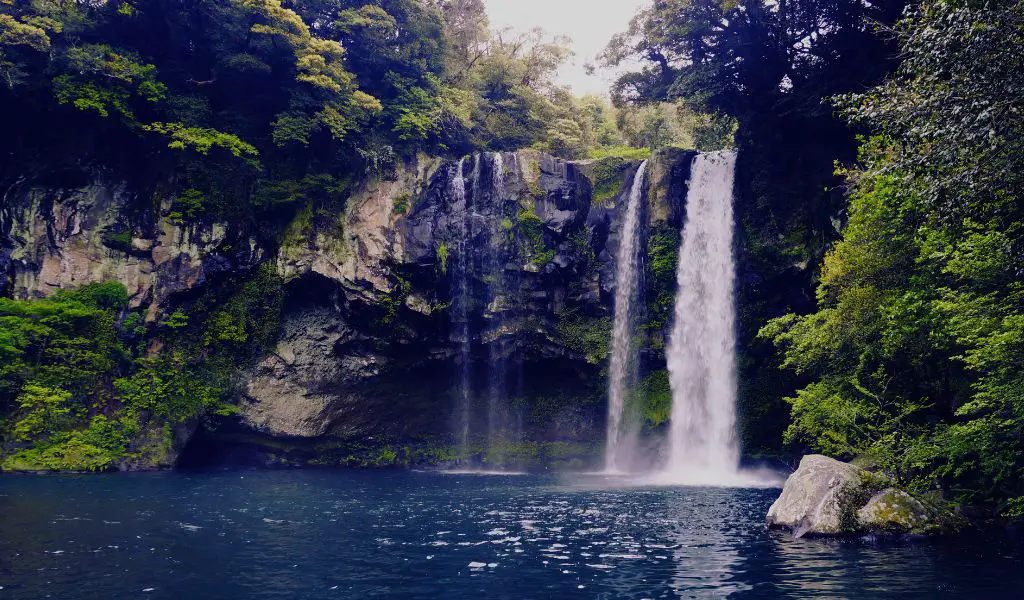
Activities
Besides the historical treasures, Jeju Island also offers a variety of outdoor activities.
The island’s 182 kilometers of semi-tropical coastline is dotted with diving spots and water sports facilities.
Inland, you can explore the impressive Manjanggul Cave, a 7.4km long lava tube, or marvel at the stunning Cheonjiyeon waterfall.
Population
Jeju Island has a population of approximately 670,000.
The residents, known as Jejuin, are known for their distinctive dialect, culture, and traditions, largely influenced by the island’s geographical isolation.
When to Go
The best time to visit Jeju Island is during the spring (April to June) when the island is in full bloom, and during autumn (September to November) when the weather is mild and the foliage turns vibrant hues of red and gold.
How to Get There
Jeju International Airport, located in the city of Jeju, serves as the main point of access.
Several airlines operate domestic flights from Seoul, Busan, and other major cities in South Korea.
There are also international flights from selected Asian cities.
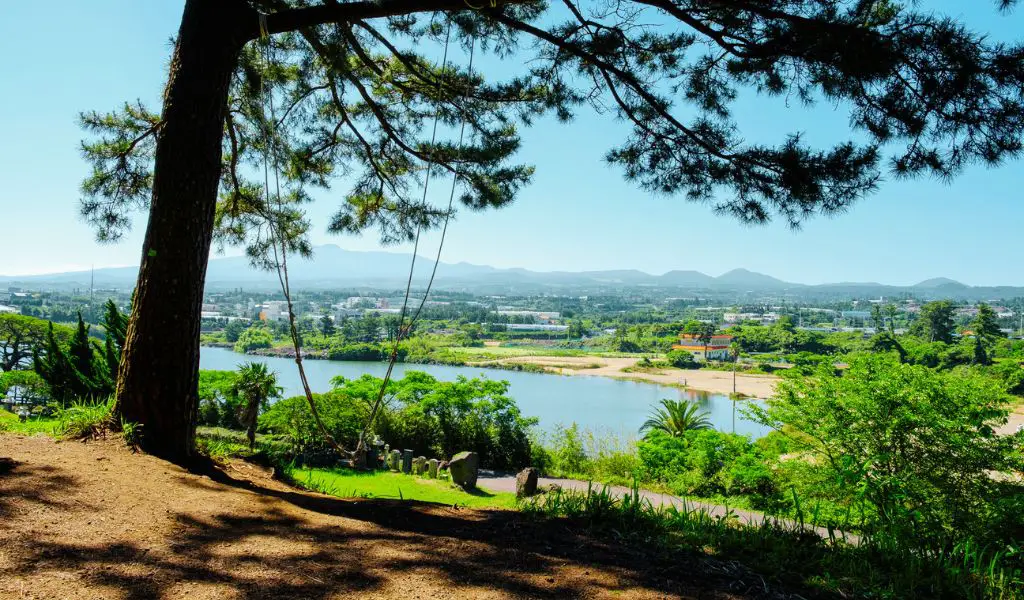
Highlights
Some of the must-visit highlights of Jeju Island include Hallasan Mountain, Seongsan Ilchulbong (Sunrise Peak), the lava tubes of Manjanggul Cave, Loveland theme park, Jeju Folk Village Museum, and the beautiful beaches of Hyeopjae and Hamdeok.
What You Should Know
When visiting Jeju Island, it’s essential to know that public transportation options can be sparse outside the city, so renting a car or bike for exploration might be more convenient.
Also, English is not widely spoken outside the main tourist areas, so learning a few basic Korean phrases can be beneficial.
FAQs
Do I need a visa to visit Jeju Island?
Over 180 countries can enter Jeju Island visa-free for a stay of up to 30 days.
What currency is used on Jeju Island?
The South Korean Won (KRW) is the official currency of Jeju Island.
Is Jeju Island safe for tourists?
Yes, Jeju Island is generally safe for tourists. However, like anywhere else, it’s advised to follow basic safety precautions.
